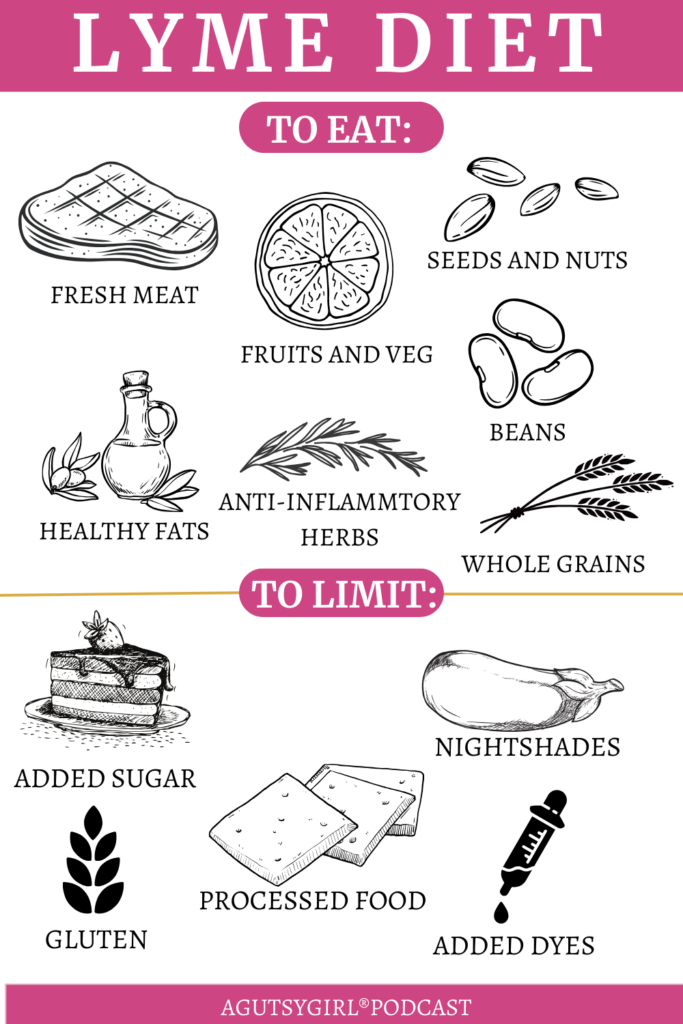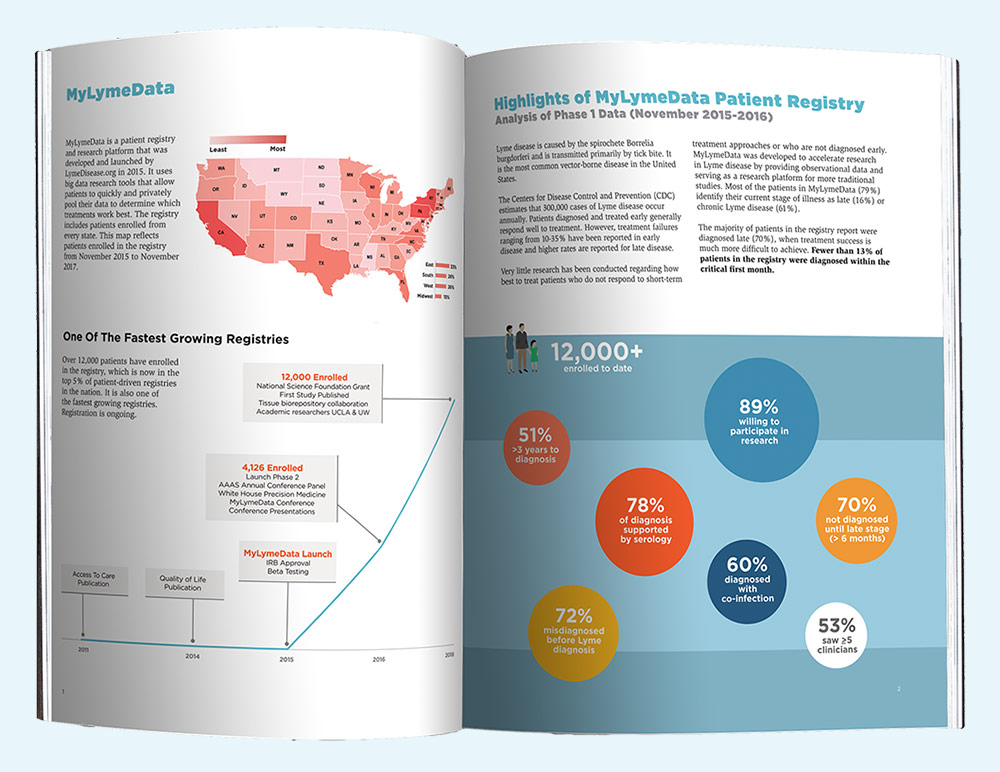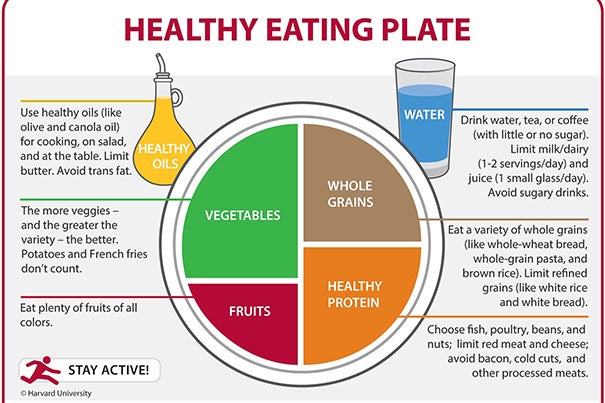Discover the surprising connection between diet changes and easing Lyme symptoms – could the key to relief be on your plate?
Table of Contents
- Introduction to Lyme Disease and Diet
- Understanding Lyme Disease Symptoms
- The Power of Good Nutrition
- Making Diet Changes for Lyme
- Lyme Disease Treatment Basics
- Special Lyme Disease Diet
- How to Get Started with Diet Changes
- Challenges and Tips for Changing Your Diet
- Feedback from Real People
- Conclusion: Is Changing Your Diet Worth It?
- FAQs about Lyme Disease and Diet
Introduction to Lyme Disease and Diet
We’ll kick off by learning what Lyme disease is and why what we eat can make a difference.
What is Lyme Disease?
Let’s find out what causes Lyme disease and how it affects our bodies. Lyme disease is an illness spread by ticks that can make us feel very sick. When ticks bite us, they can pass on a tiny germ called a bacteria that causes Lyme disease. This bacteria can make us feel tired, achy, and even give us a fever.
Can Food Help?
Now, let’s see if changing what we eat can help us feel better when we have Lyme disease. What we eat gives us the energy and nutrients our bodies need to work properly. Eating the right foods can help our bodies fight off germs like the ones that cause Lyme disease. By making smart choices about what we eat, we can give our bodies the best chance to feel better.
Understanding Lyme Disease Symptoms
When someone has Lyme disease, their body can show different signs that something isn’t right. These signs are called symptoms, and they can vary from person to person. Understanding these symptoms is essential to managing Lyme disease effectively.
Common Symptoms of Lyme Disease
People with Lyme disease may experience a range of symptoms that can affect their daily lives. Some common symptoms include:
-
Fatigue: Feeling extremely tired even after resting.
-
Joint pain: Aching or swelling in the joints can make moving uncomfortable.
-
Headaches: Constant or severe headaches can be a sign of Lyme disease.
-
Rash: A red, bullseye-shaped rash at the site of the tick bite is a common early symptom.
-
Fever: An unexplained high body temperature may indicate an infection.
These are just a few examples of the symptoms people with Lyme disease might experience. It’s essential to work with a healthcare provider to manage these symptoms effectively and prevent any long-term complications.
The Power of Good Nutrition
When it comes to fighting Lyme disease, our bodies are like superheroes gearing up for battle. And just like superheroes need the right fuel to defeat the bad guys, our bodies need the right nutrition to combat Lyme disease. Good nutrition is like the secret weapon that keeps our immune system strong and ready to fight off the symptoms of Lyme disease.

Image courtesy of lymewarrior.us via Google Images
Why Nutrition Matters
Have you ever heard the saying, “you are what you eat”? Well, when it comes to Lyme disease, this saying couldn’t be more accurate. The food we put into our bodies plays a crucial role in keeping us healthy and strong. Eating a balanced diet full of fruits, vegetables, whole grains, and lean proteins can provide our bodies with the vitamins, minerals, and nutrients they need to function at their best.
When we have Lyme disease, our immune system is working overtime to fight off the bacteria causing our symptoms. By fueling our bodies with nutritious foods, we can help our immune system work more effectively. Foods rich in antioxidants, like berries and leafy greens, can help reduce inflammation and boost our immune response. Eating foods high in omega-3 fatty acids, such as salmon and walnuts, can also help reduce inflammation and support our overall health.
But it’s not just about what we eat; it’s also about what we avoid. Foods high in sugar, processed foods, and unhealthy fats can weaken our immune system and make it harder for our bodies to fight off the symptoms of Lyme disease. By making smart choices about what we put on our plates, we can give our bodies the best chance at overcoming Lyme disease and feeling better.
Making Diet Changes for Lyme
When facing Lyme disease, making changes to your diet can play a crucial role in helping your body fight off the symptoms and feel better. Let’s explore how adjusting what you eat can make a real difference in managing Lyme disease.
Foods to Include
Choosing the right foods can give your body the nutrients it needs to combat Lyme disease. Incorporating plenty of fresh fruits and vegetables, lean proteins, healthy fats like avocados and nuts, and whole grains can help support your immune system and overall health. Foods rich in antioxidants, such as berries and leafy greens, can also provide an extra boost in fighting off the effects of Lyme disease.
Foods to Avoid
On the flip side, some foods may exacerbate Lyme disease symptoms and make you feel worse. Processed foods high in sugar and unhealthy fats can weaken your immune system and contribute to inflammation in the body. It’s best to steer clear of sugary drinks, candies, fried foods, and excessive amounts of dairy or gluten if you find they trigger any negative reactions.
Lyme Disease Treatment Basics
When it comes to treating Lyme disease, doctors use various methods to help people recover and feel better. One common approach is prescribing antibiotics, which are medicines that kill the bacteria causing the illness. These antibiotics can come in different forms like pills, liquids, or injections. It’s important for patients to take the full course of antibiotics as prescribed by their doctor, even if they start feeling better before finishing the medication.

Image courtesy of agutsygirl.com via Google Images
For people with severe cases of Lyme disease, doctors might recommend intravenous (IV) antibiotics. This means the medication is given directly into the bloodstream through a vein, usually in a hospital setting. IV antibiotics are often used when the infection has spread to the central nervous system or when symptoms are particularly severe.
In addition to antibiotics, doctors may suggest other treatments to help manage symptoms and support the body’s healing process. This can include pain relievers for joint and muscle aches, anti-inflammatory medications to reduce swelling, and physical therapy to help regain strength and flexibility.
Special Lyme Disease Diet
When dealing with Lyme disease, a special diet can play a crucial role in managing symptoms and promoting overall wellness. Let’s take a closer look at what a Lyme disease diet entails and how it can make a difference in how you feel.
| Ease Lyme with Diet Changes | |
|---|---|
| Food Group | Proposed Benefits |
| Lean Proteins | Help in rebuilding damaged tissue and support immune function. |
| Fruits and Vegetables | Provide antioxidants that reduce inflammation and boost overall health. |
| Whole Grains | Rich in fiber and nutrients that promote digestive health and energy. |
| Omega-3 Fatty Acids | Help reduce inflammation and improve brain function. |
What is a Lyme Disease Diet?
A Lyme disease diet focuses on reducing inflammation in the body, boosting the immune system, and supporting overall health. This diet typically includes foods that are rich in antioxidants, omega-3 fatty acids, and nutrients that can help combat the effects of the disease.
Some key components of a Lyme disease diet may include:
- Fresh fruits and vegetables
- Lean proteins such as chicken, fish, and tofu
- Healthy fats like avocados, nuts, and seeds
- Whole grains such as quinoa, brown rice, and oats
- Probiotic-rich foods like yogurt, kefir, and kombucha
- Adequate hydration with water and herbal teas
By incorporating these nutrient-dense foods into your diet, you can help support your body’s natural defenses and reduce the impact of Lyme disease on your overall well-being.
How to Get Started with Diet Changes
Changing your diet to help manage Lyme disease can seem overwhelming at first, but taking it one step at a time can make it much more manageable. Here are some easy first steps to get you on the right track:

Image courtesy of www.lymedisease.org via Google Images
Easy First Steps
1. **Start Slow**: Begin by making small changes to your meals. You don’t have to revamp your entire diet all at once. Try adding more fruits and vegetables to your plate or swapping out sugary snacks for healthier options.
2. **Stay Hydrated**: Drinking plenty of water is essential for overall health. Try to replace sugary drinks with water or herbal teas to keep your body hydrated and functioning well.
3. **Mindful Eating**: Pay attention to what you’re eating and how it makes you feel. Try to savor each bite and listen to your body’s hunger cues. This can help you make better food choices and avoid overeating.
4. **Consult a Professional**: Consider meeting with a nutritionist or dietitian who can create a personalized plan to help you manage your Lyme symptoms through diet. They can provide guidance on which foods to prioritize and which ones to avoid.
Remember, making changes to your diet is a journey, and it’s okay to take it one step at a time. By starting with these simple steps, you can gradually adjust your eating habits to support your overall health and well-being while managing Lyme disease.
Challenges and Tips for Changing Your Diet
When you decide to make changes to your diet, it’s important to be prepared for some challenges that may come your way. Here are some common obstacles you might face and tips on how to overcome them:
Sticking to a New Diet
One of the biggest challenges when changing your diet is sticking to it. It can be tough to break old habits and resist cravings for foods that may not be the best for your Lyme disease. To help stay on track, try planning your meals ahead of time and have healthy snacks readily available. Surround yourself with supportive family and friends who can encourage and motivate you on this journey.
Feedback from Real People
Have you ever wondered if changing your diet could help with managing Lyme disease symptoms? Well, you’re not alone! Many people have experimented with different food choices to see how they can improve their health while dealing with Lyme disease. Let’s take a look at some real-life stories of individuals who have tried diet changes and how it has impacted their journey.

Image courtesy of news.harvard.edu via Google Images
Success Stories
Meet Sarah, a 35-year-old who was diagnosed with Lyme disease last year. Frustrated with traditional treatments, she decided to focus on her nutrition. By eliminating processed foods and sugars from her diet and incorporating more leafy greens and lean proteins, Sarah noticed a significant decrease in her fatigue and joint pain. She now swears by the power of nutrient-rich foods in managing her symptoms.
Another inspiring story comes from Alex, a 27-year-old outdoor enthusiast who loves hiking. When Lyme disease forced him to put his adventures on hold, Alex turned to his diet for a solution. By cutting out gluten and dairy and adding anti-inflammatory foods like turmeric and ginger, he found that his energy levels increased, allowing him to get back on the trails sooner than expected.
These are just a couple of examples of how making conscious choices about what we eat can have a positive impact on our bodies, especially when dealing with a condition like Lyme disease. Remember, everyone’s body is different, so what works for one person may not work for another. It’s essential to consult with a healthcare professional before making significant changes to your diet.
Conclusion: Is Changing Your Diet Worth It?
After exploring the connection between Lyme disease and diet, we’ve gained valuable insights into how what we eat can impact our health. From understanding the symptoms of Lyme disease to learning about the power of good nutrition, we’ve seen how making diet changes can play a role in managing this condition. But is changing your diet really worth it?
When it comes to managing Lyme disease symptoms, nutrition plays a crucial role. By fueling our bodies with the right foods, we can boost our immune system and support our overall well-being. While changing your diet alone may not cure Lyme disease, it can certainly help alleviate symptoms and improve your quality of life.
By incorporating Lyme-fighting foods and avoiding those that may exacerbate the condition, you can take proactive steps towards feeling better. Remember, every small change you make in your diet can have a positive impact on your health.
Listening to success stories from real people who have experienced the benefits of changing their diets for Lyme disease can also provide encouragement and motivation. Their experiences reveal the potential of dietary modifications in managing symptoms and enhancing overall health.
Ultimately, the decision to change your diet to help with Lyme disease is a personal one. Consult with your healthcare provider to develop a plan that aligns with your individual needs and goals. Making informed choices about what you eat can be a powerful tool in your journey towards better health and well-being.
FAQs about Lyme Disease and Diet
Can I cure Lyme disease by just changing my diet?
Changing your diet can play a significant role in managing Lyme disease symptoms, but it may not be a cure on its own. Lyme disease is a complex condition that often requires a multifaceted approach to treatment. Eating a nutritious diet can help support your immune system and overall health, making it easier for your body to fight off the infection. However, it is essential to work closely with your healthcare provider to develop a comprehensive treatment plan that addresses all aspects of Lyme disease.
How long before I see changes in my symptoms after changing my diet?
Everyone’s body responds differently to dietary changes, so the timeline for seeing improvements in Lyme disease symptoms can vary. Some people may notice a difference relatively quickly, while others may take longer to experience changes. It’s essential to be patient and consistent with your new dietary habits. Give your body time to adjust and respond to the nutritional changes positively. Remember to communicate any changes or concerns with your healthcare provider to ensure you’re on the right track.





